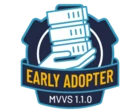I don't understand how MVIS pooled license work. Can I assume that a single pool license can hold a certain number of user licenses for use with MVIS out of all of the user licenses on the system? If I have a single application on my server does it only require a single pooled license? What if for some reason my API call takes longer than expected, does that prevent other users from connecting to MVIS site?
How can I calculate the optimum number of pooled licenses I need to effectively run my new MVIS system?
Jon
Question
MVIS Pool Licenses
Sign up
Already have an account? Login
Welcome to the Rocket Forum!
Please log in or register:
Employee Login | Registration Member Login | RegistrationEnter your E-mail address. We'll send you an e-mail with instructions to reset your password.




